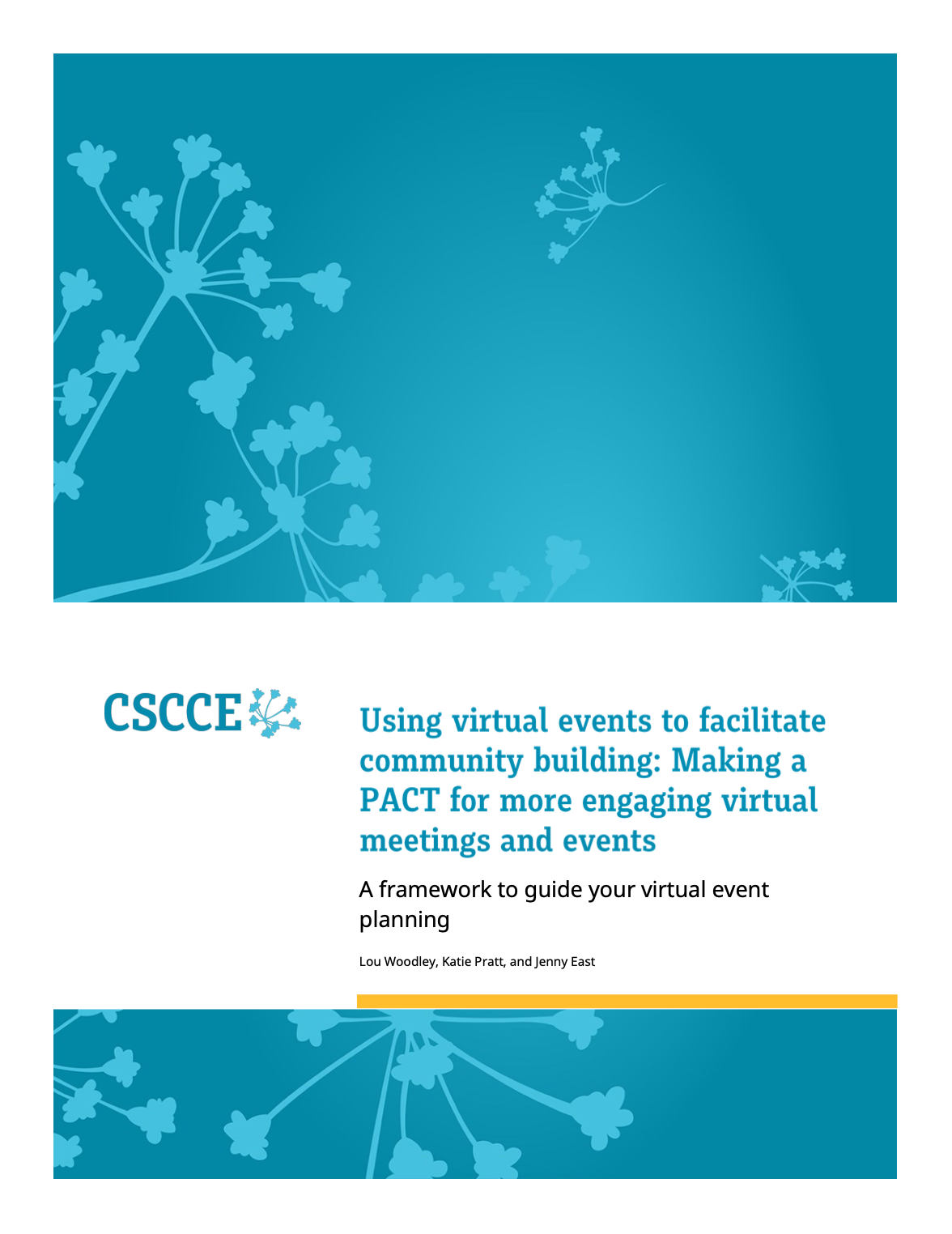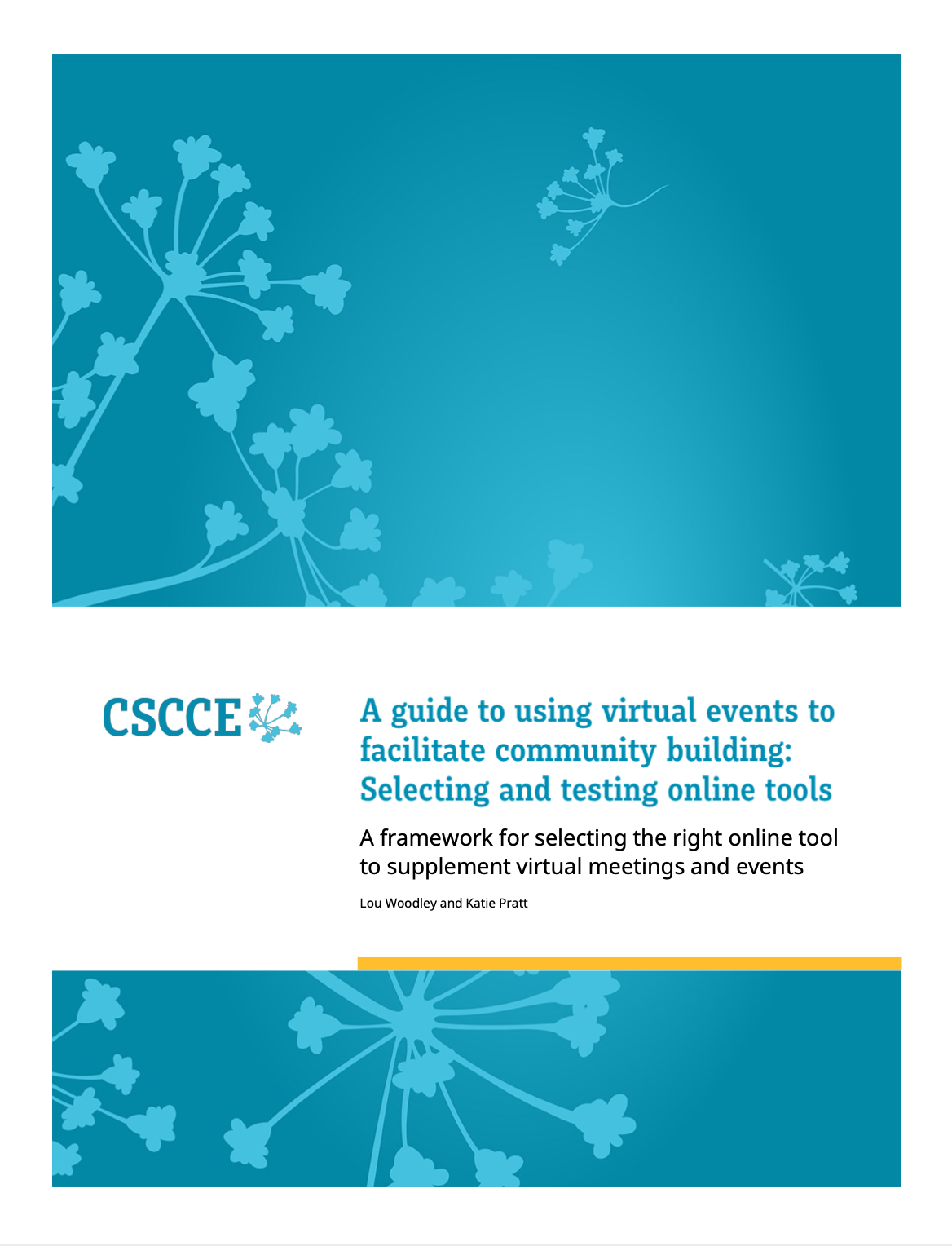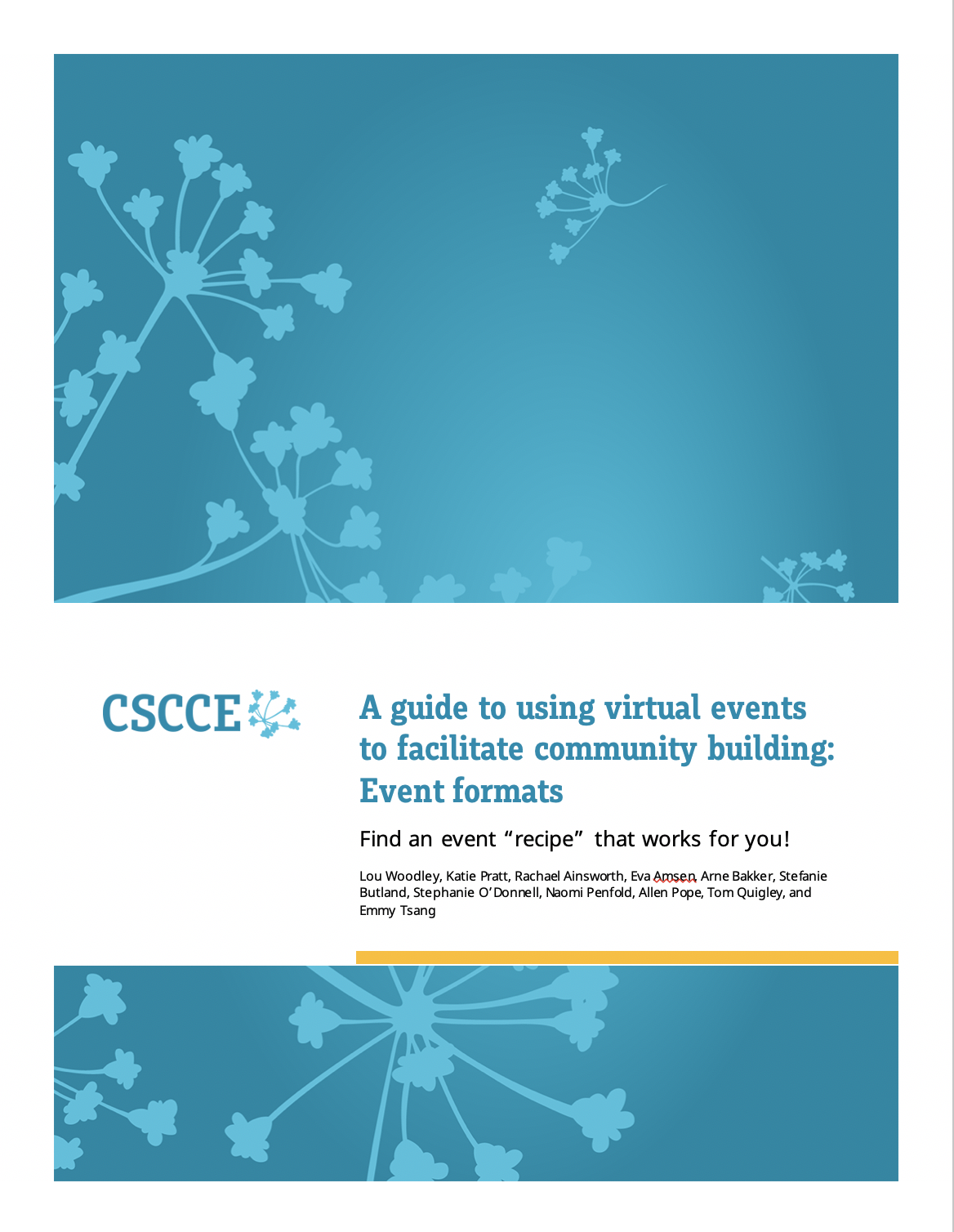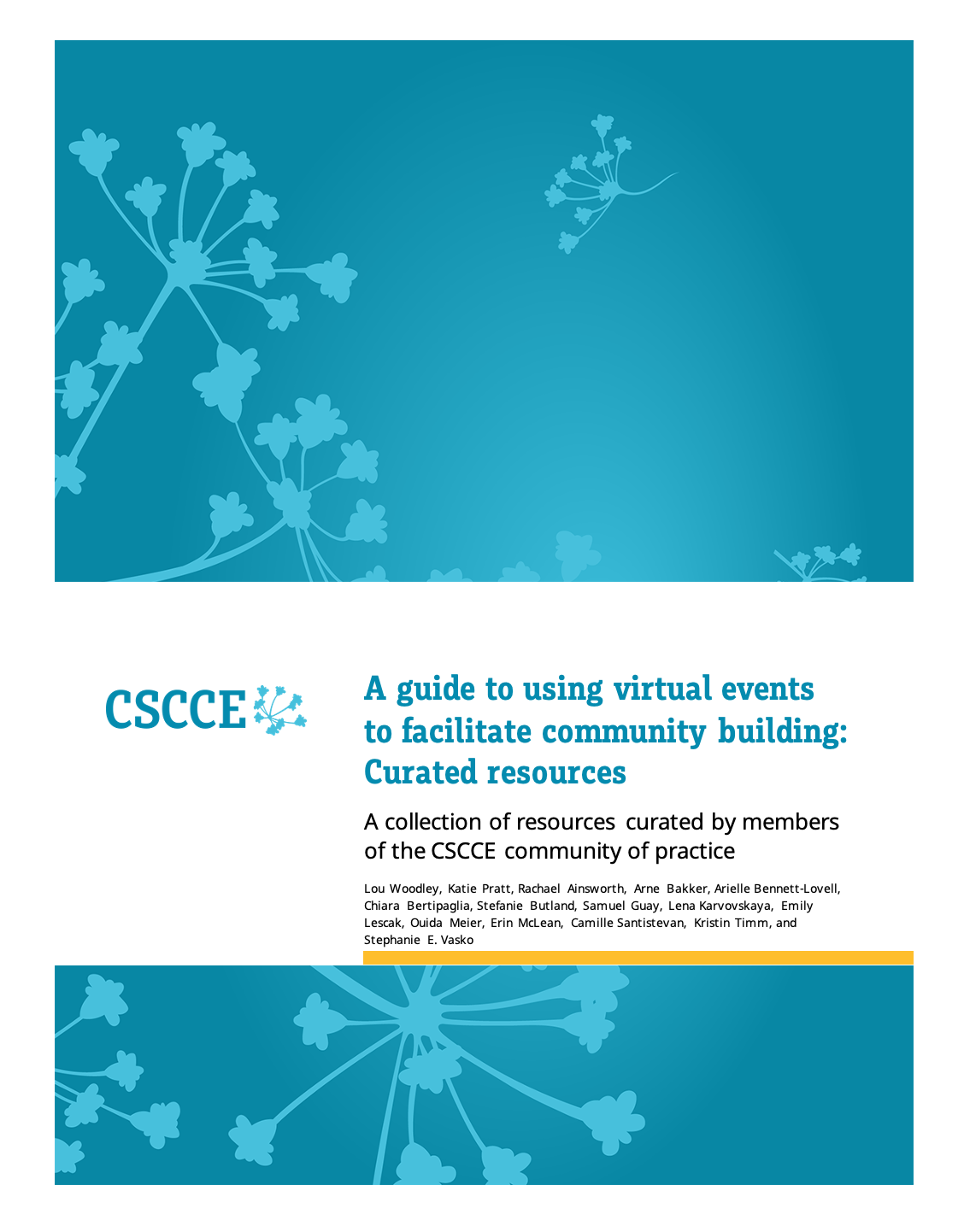CSCCE’s free PDF resources, which we make available via Zenodo, have now been downloaded more than 50,000 times! And to make this milestone even more special, it’s also our 5th Birthday this October.
In this blog post, one in a series we’re working on to celebrate our birthday and reflect on the ups and downs of the past five years, we highlight our “top 5” resources. We love hearing how you’re using these resources in your work – whether it’s adapting one of our scaffolding templates or implementing a new engagement strategy based on the CSCCE Community Participation Model!
We also want to say a big THANK YOU to those of you who helped make these resources. While some of our resources are developed by CSCCE staff, many were co-created in collaboration with the members of our community of practice.
Lastly – we’d love to hear from you if there’s a resource you need but haven’t found anywhere else. Maybe we can partner with you and other community managers in STEM to make it! Send us an email (info@cscce.org) with your idea.
CSCCE’s top 5 resources!
Note: this “top 5” is not exclusively driven by the number of downloads each resource has received – we also tried to choose those that involved our community members, or that we know have had an impact beyond their metrics. Download data is publicly available on Zenodo.
Number 5: Community champions programs tip sheets
Coming in at number 5 with 2072 downloads, it’s the collection of nine tip sheets that our Community Champions Programs working group co-created in 2022. Each tip sheet explores a different phase in the life of a community champions program, from deciding whether to develop a program at all and recruiting your first cohort, through to evaluating how the program went and offboarding your champions.

You can find all of the tip sheets, as well as a more about the work that went into creating them, in this blog post from July 2022.
Number 4: STEM community manager case studies
Another big resource collection we published in 2022 was our STEM community manager case studies. Downloaded 4845 times since then, these 25 in-depth interviews with STEM community managers showcase the diversity of the role across different geographies and institutions. We also asked case study participants to fill in the CSCCE Skills Wheel (which at 2633 downloads also deserves a special mention in this post!) to make obvious just how many skills community managers regularly use.

Anecdotally, we have heard that these case studies have helped people decide if this is the career for them, as well as advocate for position title changes or access to professional development opportunities.
Number 3: The CSCCE Community Participation Model
One of the first guidebooks Lou and Katie worked on was part one in a three-part series focusing on the CSCCE Community Participation Model (published in 2020). The model has been pivotal to so many aspects of our work over the past five years, including being a focal point for learners taking part in CSCCE’s Scientific Community Engagement Fundamentals course. In 2021 and 2022, Katie, Lou, and Camille then published two more guidebooks, one to explore the Champion mode (the individuals in a community that go above and beyond to maintain, grow, or evolve its mission) and the other to discuss the importance of Scaffolding (documentation and processes that lower barriers to community participation). Together, these three volumes have now been downloaded 7674 times!!

Number 2: Community Profiles
Over the past five years, we’ve released 34 community profiles – 2-3 page infographics that describe the ins and outs of STEM communities. From professional associations to research collaborations, Earth sciences to health sciences, there’s likely a profile in this collection that will remind you of your own community.
With a collective 8325 downloads, these community profiles are helping community managers understand different ways of supporting their members and highlighting the importance of community building across the STEM ecosystem.

Number 1: Using virtual events to facilitate community building
At number 1, with a WHOPPING 10,812 downloads, is our four-part guide to using virtual events to facilitate community building. This resource grew out of conversations we hosted at the beginning of the COVID-19 pandemic. Who remembers our impromptu community coffee chats every Friday, where we discussed the new challenges we were experiencing as the world shut down?
So many community managers were faced with the new reality that now ALL convening had to take place online, and that for many community managers and their members, they had to do it all from their homes (plus or minus children and pets)!
We started creating this guidebook “backwards” – with part three, “Event formats” coming out first. Even as an individual item in our resource collection, part three of this guidebook is THE most downloaded resource we’ve ever published (7917 downloads to date). It was a collaborative effort – we worked with a number of our members who had implemented new tools, or pushed existing tools to their limits, to document this snapshot in time when everything from team meetings to scientific conferences moved online.
Using virtual events to facilitate community building: Making a PACT for more engaging virtual meetings and events
by Lou Woodley, Katie Pratt, and Jenny East
This section focuses on the overall event planning process: We outline our PACT framework, which describes four key elements to consider when planning your meeting or event.
Using virtual events to facilitate community building: Selecting and testing online tools
by Lou Woodley and Katie Pratt
This section outlines five steps to assist your assessment of virtual tools to supplement online meetings and events. We walk you through the process; defining the goals or use case first and then finding the right tool to meet your needs.
Using virtual events to facilitate community building: Event formats
by Lou Woodley, Katie Pratt, Rachael Ainsworth, Eva Amsen, Arne Bakker, Stefanie Butland, Stephanie O’Donnell, Naomi Penfold, Allen Pope, Tom Quigley, and Emmy Tsang
Co-created with members of our community of practice, this section includes 12 "recipes" for virtual events. In it, you’ll find protocols, tips, and lessons learned from STEM community managers in a variety of settings.
Using virtual events to facilitate community building: Curated resources
by Lou Woodley, Katie Pratt, Rachael Ainsworth, Arne Bakker, Arielle Bennett-Lovell, Chiara Bertipaglia, Stefanie Butland, Samuel Guay, Lena Karvovskaya, Emily Lescak, Ouida Meier, Erin McLean, Camille Santistevan, Kristin Timm, and Stephanie E. Vasko
In this section we focus on curating links to useful resources about virtual events – including case studies of conferences and trainings that moved online at short notice.
After the initial “Event formats” guide went live, we turned our attention to fleshing out the missing pieces – adding two guides to support strategic planning for virtual events, and a heavily curated collection of additional online resources related to event planning.
To complement the virtual events guidebook, we also subsequently published three related tip sheets, that explore approaches to captioning live events online, practices to prepare for and react to Zoom bombers, and a series of guiding questions to enhance the accessibility of online gatherings.
Send us your feedback!
Have you used a CSCCE resource, or would you like to work with us to create something new? Let us know by emailing info@cscce.org!
Join us to celebrate 5 years
We’ll be sharing and scheduling more items from now until the end of the year. If you’re keen to start marking your calendars, the first event we can confirm is our annual community potluck! Join us on Wednesday, 18 December to review how the year has gone and look ahead to 2025 with us. Our events calendar includes options for adding this event to your own personal calendar.



